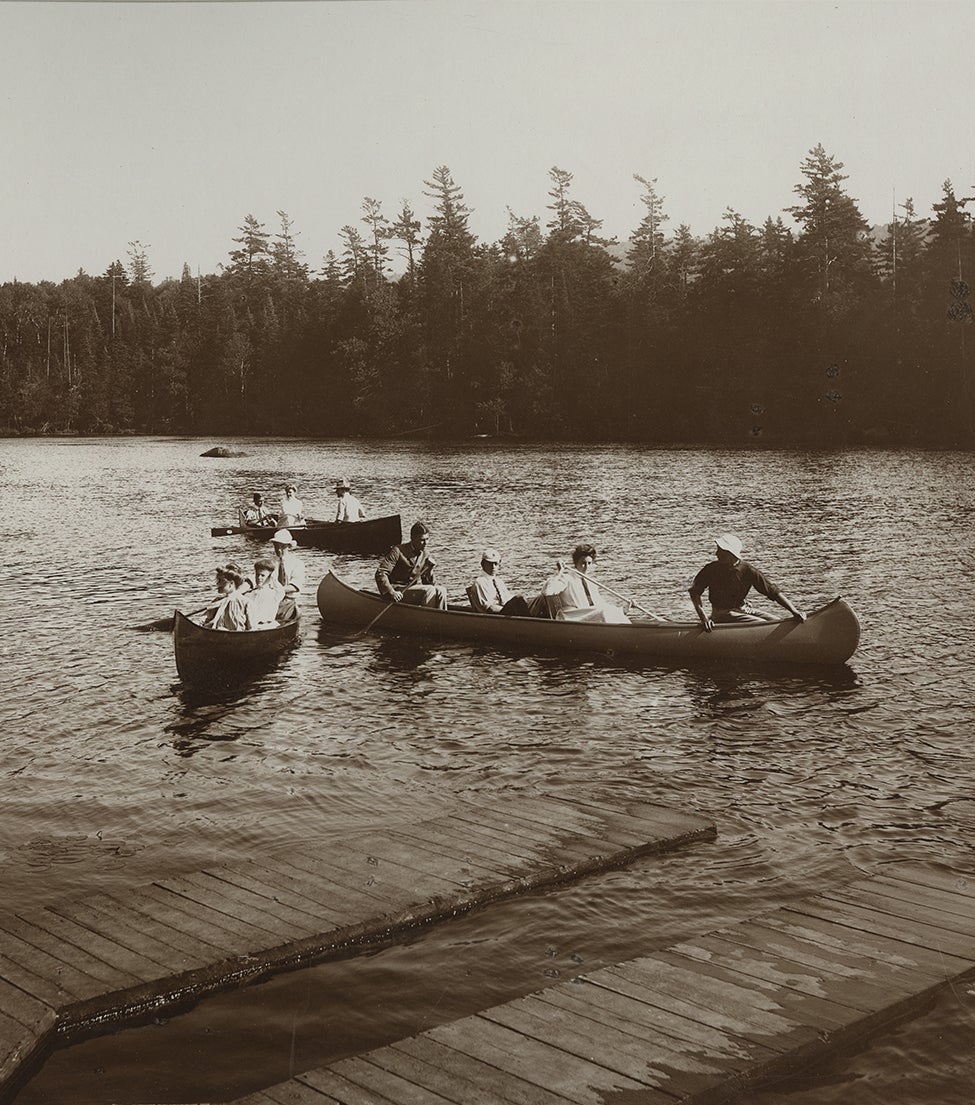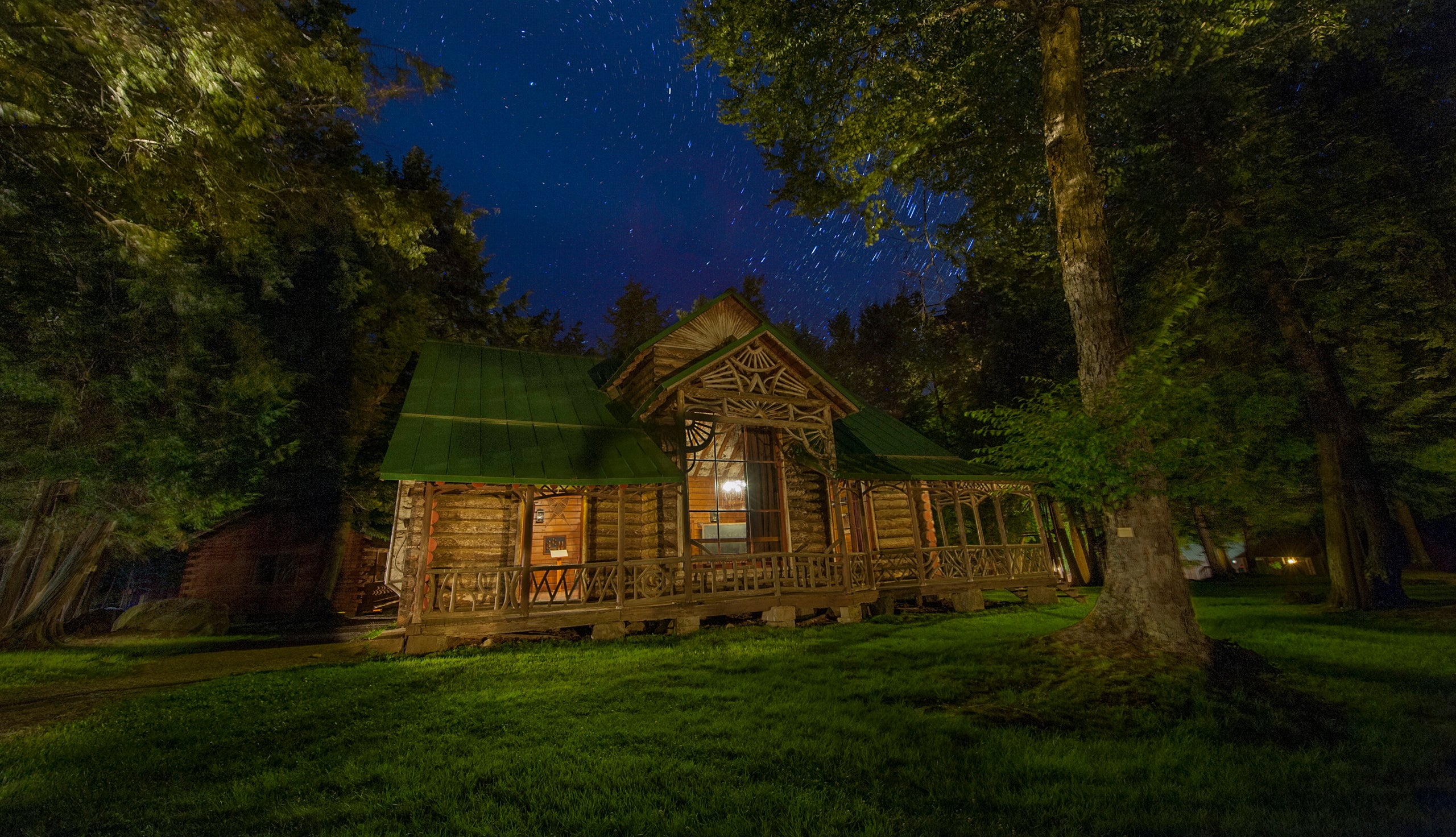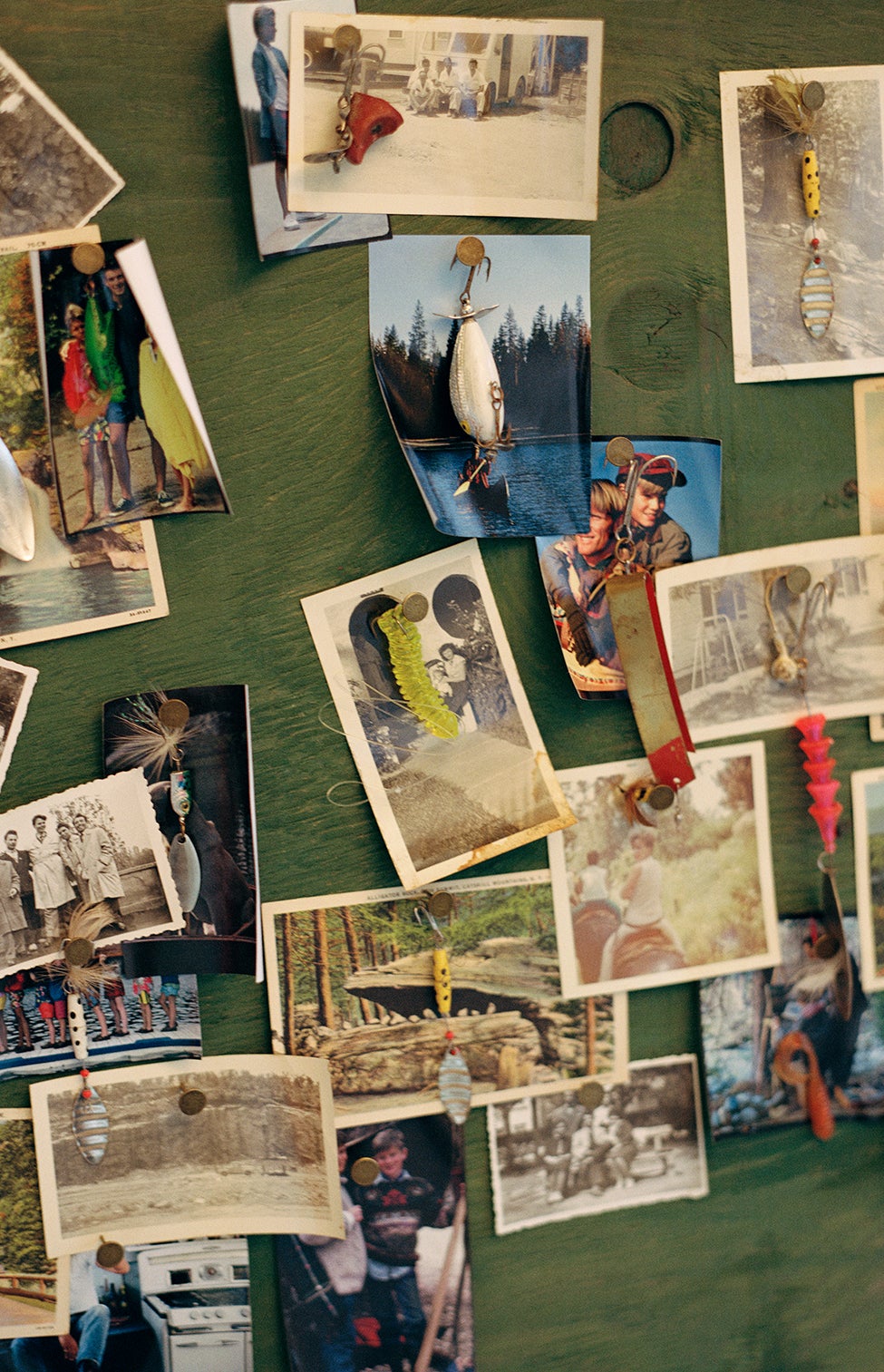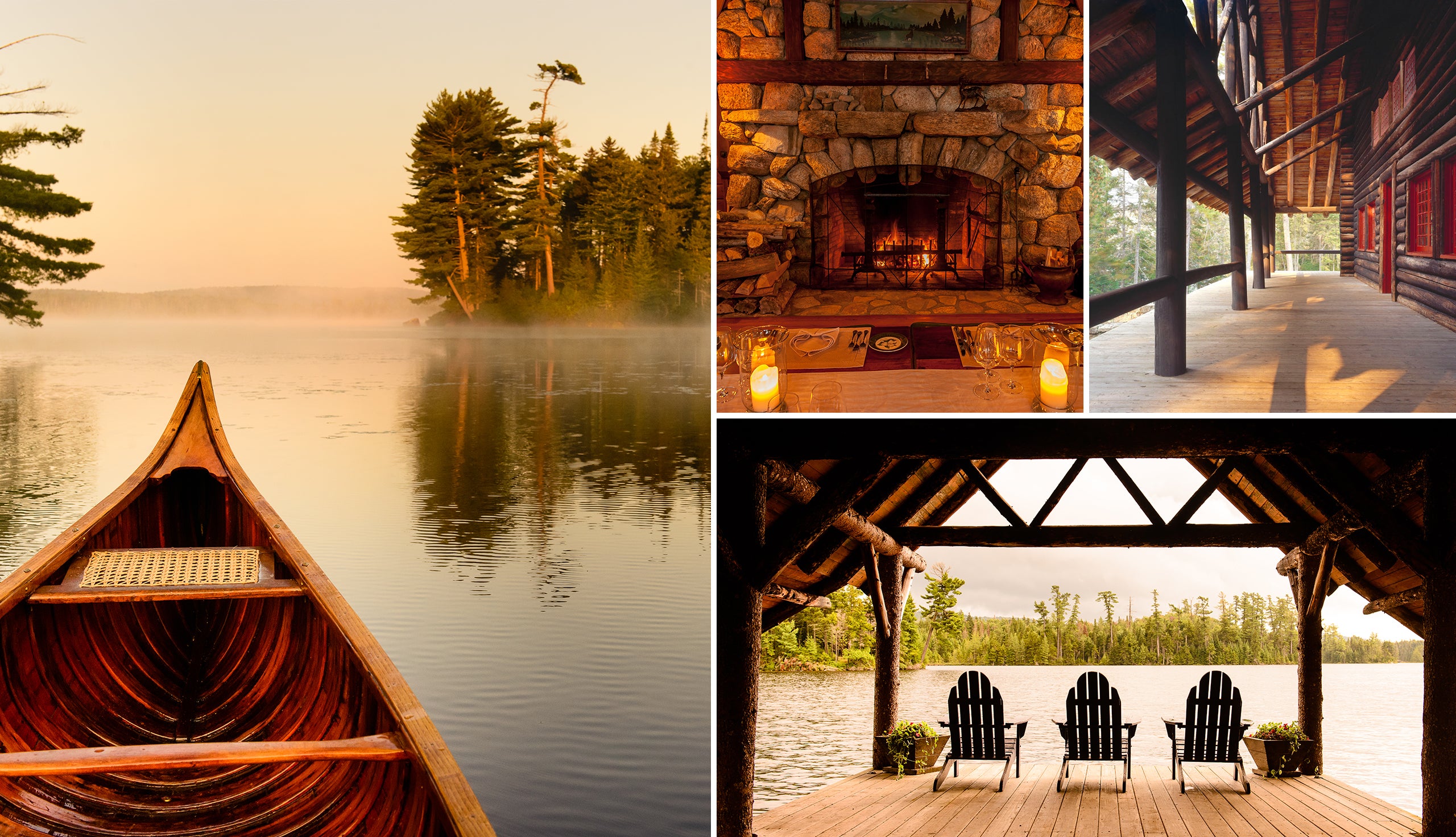
In 1903, the editor of Town & Country magazine, reporting from upstate New York’s Adirondack region—a sprawling expanse of lakes, mountains, and forests—noted a welcome change in the way America’s East Coast elite was choosing to spend its summer leisure time. The departure from the grand hotels of yesteryear, William Frederick Dix wrote, offered “a truer idea of summer rest” centered around hiking, fishing, paddling canoes, playing tennis, singing around the campfire, and neglecting to dress up for dinner.
It was also an experience anchored in architecture, for at the center of it was a new type of summer house: the Adirondack Great Camp, a model of elevated rusticity whose emergence over the last quarter of the 19th century can be attributed in large part to the efforts of one man—William West Durant.
Born in Brooklyn, New York, and educated in Europe, Durant was as well traveled as any young member of America’s Gilded Age elite. But he was no backwoods pioneer, and didn’t set foot in the Adirondacks until 1876, at the age of 25. There were some timber and mining interests there, and a scattering of farms, but most would-be settlers had ignored the region in favor of the booming West. Only recently had the great string-pullers seen opportunity (and a fashionable one, at that) in New York’s North Woods.
Among those was Durant’s father, a railroad magnate who’d just extended train service from Saratoga up to North Creek. It was the first of several steps intended to open the region up and, in the process, extract a different type of green out of the hundreds of thousands of forest acres that the elder Durant owned there. For help in this enterprise, he summoned his son back from a luxurious sojourn in Egypt.

The younger Durant had boundless energy, savvy social instincts, and a worldly design sensibility, even if he lacked formal architectural training. His first task was to help make the shores of Raquette Lake accessible via a combination of rail, boat, and horse cart. Durant then laid the first stone of the edifice that would anchor his legacy. Pine Knot, as it was called, was a high-low meeting of Swiss chalet and logging compound. Its creator employed dozens of skilled workers to build it, sending woodsmen off for days at a time to fell timber that had just the right grain or texture.

The camp’s many structures—including those of the village Durant built to house the guides, blacksmiths, carpenters, laundresses, and other staff—were built of native stone, spruce, and cedar. Furniture in guest rooms was handmade from materials found on-site, including bent tree limbs and even twigs, which Durant’s able craftsmen twined together for ornamental effect. Lining the tidy paths were tree stumps planted with ferns and flowers, and visitors returned to their cottages after dark bathed in the glow of kerosene lanterns.

Durant created a rafted “floating annex” and furnished a houseboat that could be towed to all corners of the lake. He swapped out metal stovepipes for stone chimneys, but kept striped tents on-site for novelty—a “glamping” option avant la lettre. The writer of the eminent Adirondack travel guide in 1888 called it “the pioneer camp of this section, and one of the most artistic in the woods.”
All of these developments happened incrementally, so Pine Knot was never quite the same one summer after another. Durant’s fanciful, organic approach is a defining element of Adirondack style, according to Manhattan-based decorator Celerie Kemble, who cites Treetops, her mother’s camp near Keene, as an example. What began as a simple lean-to by the family firepit “turned into a weird, little two-story house with birch interiors and its own porch and gables and swinging sofa beds,” Kemble says. “Once you start twigging, the branches seem to grow on their own, and then slabs of rock are dug out of the earth and you have to incorporate them—it’s about meandering, and loving the whimsy that nature put into the project, as opposed to just grinding [the land] flat and building.”
In the early days especially, though, there was nothing laissez-faire about the hosting. Durant went to great pains to keep his visitors from the city comfortable, hiring men to break miles of lake ice for his mother’s spring arrival and expensively burning wood, rather than coal, in his Adirondack Railway locomotives to keep the air more pleasant for passengers. The menu at Pine Knot benefited from his cosmopolitan tastes in food; the kitchen inventory included eight sherry decanters and a Champagne saber.
Pine Knot served as a family headquarters but also as a showpiece. Durant was, by all accounts, a skilled social operator, a “pioneer woodland host” (in the words of one historian) who poured charm onto mistresses and wealthy acquaintances alike. By 1885, the year Durant’s father died, leaving his only son a small fortune, many of these friends and contacts were so enamored of his “Camp Beautiful” ideal that they were investing in their own imitations of it nearby. Lakeside hotels also popped up to match the upscale resorts of Saratoga Springs and Newport.
With the addition of two new Great Camps (where he implemented rustic furniture selectively, for effect, and toned down the use of tree bark, which tended to peel and shed and attract beetles), by the turn of the century Durant was in deep financial trouble. Years of overspending—on failed Adirondacks projects and on his 191-foot trophy yacht—were finally catching up with him. He lost the Raquette Lake transportation line, with its watercraft and handsome train engine, and after working briefly as a hotel manager in the region, he left to pursue a string of (mostly) failed enterprises elsewhere.

Meanwhile, the style he had done so much to create evolved and thrived, and not just at Sagamore, which he sold to Alfred G. Vanderbilt in 1901. William Coulter and other professional architects who came to dominate the Adirondacks scene tried to outdo one another with showstopping lodges. Travel writers celebrated the eclectic décor of the Great Camps—exotic carpets, mounted animal heads, Japanese lamps—and readers of middle-class magazines started to covet them like never before.
By the time Durant—neither poor nor rich, and happily remarried—died in 1934, the Depression had made the Great Camps considerably less great. “Most of them became real dinosaurs after World War II and were seen as undesirable and a bit old-fashioned,” says Steven Engelhart, executive director of Adirondack Architectural Heritage, a preservation and education nonprofit. Modernism became all the rage. Although a few old families kept their ancestral properties in shape, others were razed or neglected by cash-strapped owners.
Overall, though, the past half-century has been good for Great Camps. Topridge, where breakfast-cereal heiress Marjorie Merriweather Post entertained in high style for much of the 20th century, has been lovingly maintained by owners Harlan Crow (a Texan real estate developer) and his wife, Kathy. Sagamore is a National Historic Site. White Pine Camp and Kamp Kill Kare (now called Lake Kora) are both wonderfully intact—and take bookings.
Kemble, who has visited the Adirondacks since childhood, associates the region with rugged wilderness but also with antique chinaware and “the whisper of a canoe going through still water”—a more refined counterweight that can be harder to find at a Montana dude ranch. “There’s more of a poetic sense of delicacy than in the Old West camp style. It’s a moccasin footprint,” she says.
Engelhart finds meaning in the style’s light tread. “One of the aesthetic messages that rustic architecture and Great Camps send to us is that it’s possible for human beings to have a better relationship with nature,” he says. “I think that’s what made them appealing both in the 19th century and 100 years later.”
- Courtesy of Lake Kora
- Courtesy of the State University of New York
- © Ralph Lauren Corporation
- Courtesy of Lake Kora






